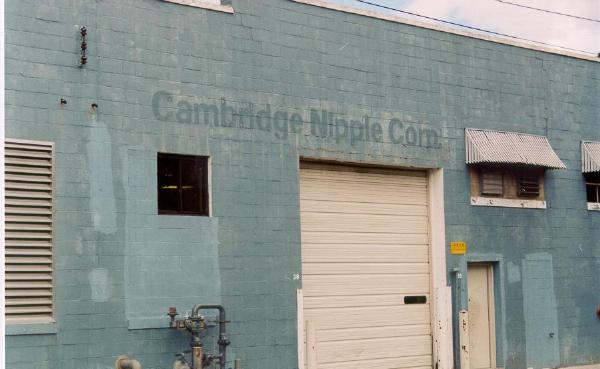|
|
 
|
|
Author
|
Topic: Failed business names
|
|
|
|
|
Bob Maar
(Maar stands for Maartini)

Posts: 28608
From: New York City & Newport, RI
Registered: Feb 2001
|
 posted 03-10-2005 03:08 PM
posted 03-10-2005 03:08 PM





Rated G ![[Smile]](smile.gif)
SALVAGING VALUE FROM FAILED DOT-COMS
By W. Marc Schwartz and Gary Abdalla
Over the past few years, nearly 1,000 dot-com companies have failed. And because they leased everything they could - office space, furniture, computers and equipment-at first glance it looked as though their creditors were out of luck. But now enterprising attorneys are finding that many of these deceased dot-coms have intellectual property that, as recent cases have shown, possesses significant value. Such assets typically include trademarks, domain names, customer lists, software infrastructure and content.
For dot-coms, the biggest expense was marketing. Many were convinced that if they succeeded in becoming the best-known player in their market segment regardless of the cost, market dominance and bountiful profits would follow. In most cases the millions spent on marketing simply failed to generate profits fast enough to save the company; yet, those investments, in many cases, have greatly enhanced the value of the company's trademarks and domain names.
Egghead.com, which sold personal computers, software and electronics online, spent a fortune to build brand awareness. After the company filed for bankruptcy, Amazon.com quickly swooped down and bought its web site and most of its assets for $6.1 million. Egghead.com is now part of Amazon's online shopping network.
For most dot-coms, research and development was the second-largest expense. Expecting a tidal wave of customers, dot-coms developed web content to attract millions of customers and ramped up software and hardware infrastructure to handle their orders. Though the millions of customers never came, or spent too little to justify the cost of attracting them, the intense research and development often resulted in software and content of considerable value to their surviving competitors, or even to companies in unrelated businesses but with similar processing needs.
Webvan, once a billion-dollar company, was built on a shaky business concept: selling groceries online and then delivering them to customers' homes. To get ready for a huge volume of grocery orders, the company spent $100 million designing and equipping a state-of-the-art and web-enabled warehouse and distribution system in Oakland, Calif. After going bankrupt, Webvan sold its software technology and other intellectual assets for $2.65 million to Kaiser Foundation Hospitals. Kaiser also purchased the distribution center equipment and assumed the lease obligations. The technology and distribution center are helping Kaiser streamline the process of shipping pharmaceuticals and medical supplies to its 27 California hospitals.
Though many dot-com concepts were simply unworkable, some were good ideas that failed because of limited capital or inept management. Such intellectual property can have considerable value to a company with the resources to commercialize it further. For example, despite a good concept, CyberCash, which provided payment processing software and services to online vendors, fell into Chapter 11 bankruptcy. It then sold its software to credit card processor First Data Merchant Services and its North American payment service operations to security specialist VeriSign for a combined bid of $24 million.
Another company with a good idea, E-Stamp, spent several years and considerable capital developing and patenting electronic postage stamps that could be purchased over the Internet and printed on an envelope with a laser printer. After gaining limited market acceptance of electronic stamps and being hit with a series of patent infringement claims by Pitney Bowes, the company terminated its core business. Considering that the patent portfolio was already under attack with infringement claims, it's hard to imagine that a buyer could be found. Then a competitor, Stamp.com, which was already fighting similar infringement claims from Pitney Bowes, stepped up and bought the company's 31 patents, the E-Stamp trademark and the domain name for $7.5 million.
Many dot-coms established privacy policies that promised nondisclosure of customer preferences and the like to third parties. Failed online toy retailer Toysmart.com tried to sell its customer list but was blocked by the Federal Trade Commission. In explaining the action, FTC Chairman Robert Pitofsky said, "Even failing dot-coms must abide by their promise to protect the privacy rights of their customers." However, another failed toy retailer, eToys, discovered alternative routes around the privacy barrier. To pay creditors, the company sold its BabyCenter.com web site to Johnson & Johnson for $10 million and its inventory and intellectual property to competitor KB Toys, owner of KBkids.com, for $8.75 million. The intellectual assets included eToys' trademarks, trade names, logos and web address. Purchasing the trademark and other intellectual property enabled KB Toys to profit from the millions of dollars that eToys had spent on advertising - both online and offline. While KB Toys could not purchase the eToys customer list directly, its agreement called on eToys to e-mail all its customers with recommendations that they visit KBkids.com and provided coupons for KBkids purchases. Additionally, the eToys web site now redirects visitors to the KB Toys web site.
Some failed dot-coms, like APBnews.com, which hosts content on police investigations and the criminal justice system, have content that is valuable. Unable to find financing to restructure under Chapter 11, APB sold its web site content and domain names to SafetyTips.com for $575,000.
How Do You Sell Intellectual Assets?
Solvent companies that want to sell assets can negotiate the price, but bankrupt dot-com companies cannot. That's because assets in Chapter 7 bankruptcy are sold at auction. Selling assets in bankruptcy can be both easier and harder than outside of it. Because the creditors are often intimately involved in the process and have a significant stake in the outcome, many more potential buyers can be identified and sourced out. The down side to the process is that even though you spend days negotiating a deal, you still have to get the parties to the bankruptcy, as well as a judge, to agree. Usually if all the parties agree, the court will go along, but to get there means a lot of negotiating with the various creditor groups as well as the prospective buyer. In some cases, the process turns into an auction with the judge playing the role of the auctioneer. Because of the number of parties involved and the time it takes to get everything lined up for the judge, new buyers can show up at the last minute and push the price up even more.
However, the auction sale does not preclude the seller from trying to drum up interest in the assets and sell them at the highest possible price. To successfully sell assets in bankruptcy requires drumming up interest and getting the highest price possible. Finding a potential purchaser for intellectual assets is like finding a licensee. The search typically starts with competitors who may be interested in extending technology developed parallel to that of the bankrupt dot-com. Such companies are likely to be interested in buying the dot-com's trademarks, domain names and customer lists if only to get them off the market and out of the reach of other competitors. Another possibility is vendors seeking forward integration to extend their reach directly to the failed dot-com's customers - such as a manufacturer buying the assets of one of its online retailers. Conversely, large customers may see backward integration as way to reduce costs of supplies or services - such as a travel agency buying an online travel reservation system and web site.
Although the dot-com may be dead, the original developers of the technology are still around. They are in touch with developers in other companies, in industry associations and in personal circles. They know who does similar work. They may even have resources or backing to purchase the technology themselves.
Though appraising the intellectual assets of a bankrupt dot-com can be difficult, it is an important step for marketing those assets aggressively. A traditional approach is to estimate the earning stream that the assets can generate. But because the anticipated financial results never materialized, the company's business plan, with its optimistic forecasts, may be useless. Further, because the risks of the business are likely to be extremely high, discount rates can be comparable to those that venture capitalists use for unproven technology. Also, if the technology will be used for a purpose other than that for which it was created, it's important to understand the buyer and its plans for commercialization.
Another approach looks at recent sales of comparable assets and uses those figures to determine the current market value of the failed dot-com's technology. In using this approach, it is important to bear in mind that such transactions can become outdated and irrelevant at Internet speed.
Clearly, recovering value from the intellectual assets of bankrupt companies requires a great deal of work, analysis and ingenuity, but the rewards can be substantial. Just ask the creditors of Egghead, Webvan, Cybercash, eToys, E-Stamp and APBnews.
| IP: Logged
|
|
|
|
All times are Central (GMT -6:00)
|
|
Powered by Infopop Corporation
UBB.classicTM
6.3.1.2
The Film-Tech Forums are designed for various members related to the cinema industry to express their opinions, viewpoints and testimonials on various products, services and events based upon speculation, personal knowledge and factual information through use, therefore all views represented here allow no liability upon the publishers of this web site and the owners of said views assume no liability for any ill will resulting from these postings. The posts made here are for educational as well as entertainment purposes and as such anyone viewing this portion of the website must accept these views as statements of the author of that opinion
and agrees to release the authors from any and all liability.
|

 Home
Home
 Products
Products
 Store
Store
 Forum
Forum
 Warehouse
Warehouse
 Contact Us
Contact Us




 Printer-friendly view of this topic
Printer-friendly view of this topic









![[Smile]](smile.gif)



